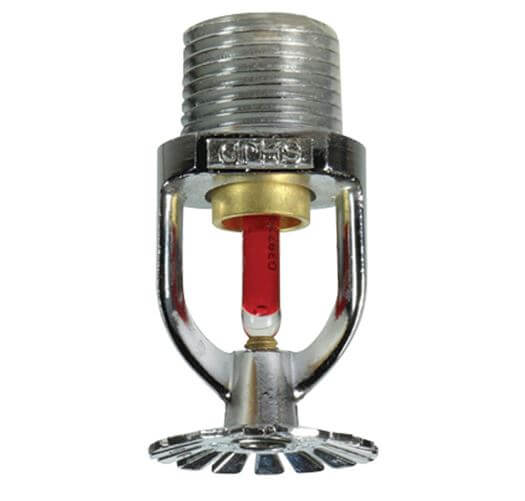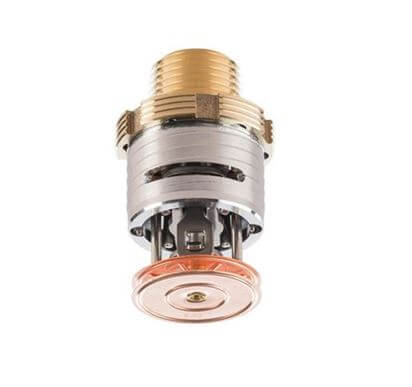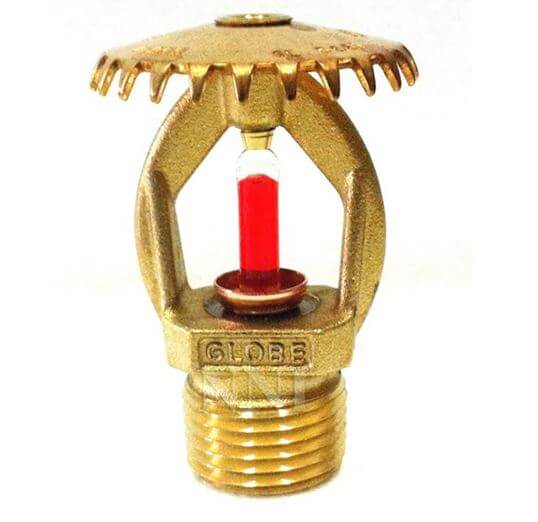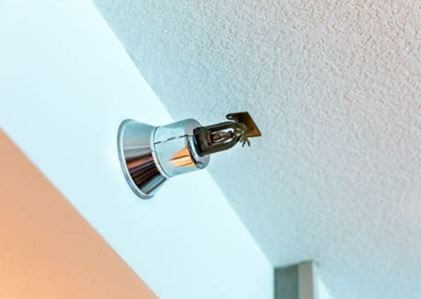A fire sprinkler system is an active fire prevention method that consists of a water supply system that delivers sufficient pressure and flowrate to a water distribution piping system, which is coupled to fire sprinklers. Systems for homes and small buildings, which were previously only available in factories and large commercial structures, are now available at a cost-effective price. Sprinkler systems are widely utilised around the world, with more than 40 million sprinkler heads installed each year.

A heat-sensitive glass bulb or a two-part metal link held together with fusible alloy keeps each closed-head sprinkler closed. The glass bulb or link exerts pressure on a pipe cap, which functions as a stopper, preventing water from flowing until the ambient temperature around the sprinkler meets the individual sprinkler head’s design activation temperature. When the predetermined heat level is attained in a conventional wet-pipe sprinkler system, each sprinkler operates independently. As a result, only the sprinklers closest to the fire will activate, usually only one or two. This increases water pressure on the fire’s source and reduces water damage to the structure.
There are many types of water sprinkler heads which can be used according to one’s use-
1) Pendent Sprinkler Heads – When properly fitted, pendent heads have a convex, almost umbrella-shaped deflector that guides water out and away from the sprinkler head. Deflectors on upright heads, on the other hand, bend toward the piping, capturing and redistributing water as it shoots up toward the ceiling. These water sprinklers are hung from the ceilings towards the ground. The water is sprayed downwards to maximize the fire affected area. Due to its provision of maximum coverage, the sprinkler is ideal for offices, homes etc.

2) Concealed Pendent Heads – Sprinkler heads that are concealed are totally covered by a cover plate, whereas sprinkler heads that are recessed are exposed and surrounded by a disc-shaped escutcheon. It is ideal for the places with an aesthetic appeal, as they are visually attractive and work exactly like a pendant sprinkler head.
3) Upright Sprinkler Head – Water is sprayed upward to a concave deflector by upright fire sprinklers, creating a dome-shaped spray pattern. Deflector-up is installed to protect certain areas to prevent ice and debris from accumulating in the head. Due to its features, this water sprinkler head is useful for places with machineries and ducts.

4) Sidewall Sprinkler Heads – Fire sprinklers that protrude from the side of a wall, rather than hanging from the ceiling, are known as sidewall fire sprinklers. In circumstances where ceiling access is restricted or freezing is a problem, sidewall fire sprinklers are perfect. Sidewall Sprinklers because of their half detector technique are highly beneficial for small rooms.
The size of the bulb is the most significant difference between regular and quick response sprinklers. Because the bulb on a normal sprinkler is slightly larger, it takes a little longer to activate. As the name implies, a quick response sprinkler is thinner and has a faster response time.

Navair, specialises in fire installations and evacuation techniques. Being a pioneer in this industry, Navair has always been on the top by providing the best services. With its innovation and techniques, it has surely surpassed the expectations and liking of the clientele it has worked with. After all, it’s not just a fire-evacuation technique for you, it’s your life for Navair.